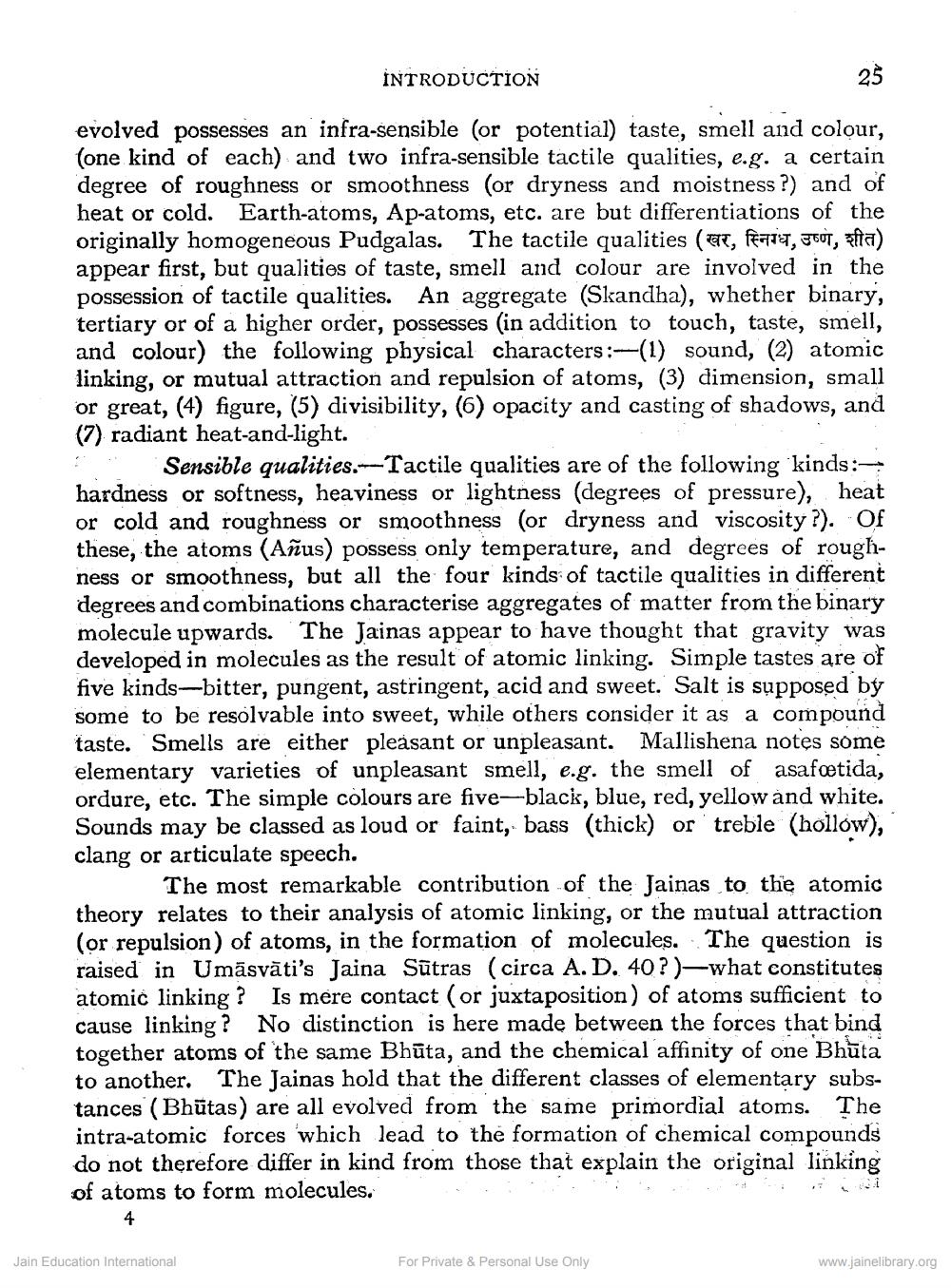________________
25
evolved possesses an infra-sensible (or potential) taste, smell and colour, (one kind of each) and two infra-sensible tactile qualities, e.g. a certain degree of roughness or smoothness (or dryness and moistness?) and of heat or cold. Earth-atoms, Ap-atoms, etc. are but differentiations of the originally homogeneous Pudgalas. The tactile qualities (,,,a) appear first, but qualities of taste, smell and colour are involved in the possession of tactile qualities. An aggregate (Skandha), whether binary, tertiary or of a higher order, possesses (in addition to touch, taste, smell, and colour) the following physical characters:-(1) sound, (2) atomic linking, or mutual attraction and repulsion of atoms, (3) dimension, small or great, (4) figure, (5) divisibility, (6) opacity and casting of shadows, and (7) radiant heat-and-light.
INTRODUCTION
Sensible qualities.-Tactile qualities are of the following kinds :hardness or softness, heaviness or lightness (degrees of pressure), heat or cold and roughness or smoothness (or dryness and viscosity ?). Of these, the atoms (Añus) possess only temperature, and degrees of roughness or smoothness, but all the four kinds of tactile qualities in different degrees and combinations characterise aggregates of matter from the binary molecule upwards. The Jainas appear to have thought that gravity was developed in molecules as the result of atomic linking. Simple tastes are of five kinds-bitter, pungent, astringent, acid and sweet. Salt is supposed by some to be resolvable into sweet, while others consider it as a compound taste. Smells are either pleasant or unpleasant. Mallishena notes some elementary varieties of unpleasant smell, e.g. the smell of asafoetida, ordure, etc. The simple colours are five-black, blue, red, yellow and white. Sounds may be classed as loud or faint, bass (thick) or treble (hollow), clang or articulate speech.
The most remarkable contribution of the Jainas to the atomic theory relates to their analysis of atomic linking, or the mutual attraction (or repulsion) of atoms, in the formation of molecules. The question is raised in Umāsvāti's Jaina Sūtras (circa A. D. 40?)-what constitutes atomic linking? Is mere contact (or juxtaposition) of atoms sufficient to cause linking? No distinction is here made between the forces that bind together atoms of the same Bhuta, and the chemical affinity of one Bhuta to another. The Jainas hold that the different classes of elementary substances (Bhutas) are all evolved from the same primordial atoms. The intra-atomic forces which lead to the formation of chemical compounds do not therefore differ in kind from those that explain the original linking of atoms to form molecules.
4
Jain Education International
For Private & Personal Use Only
www.jainelibrary.org




